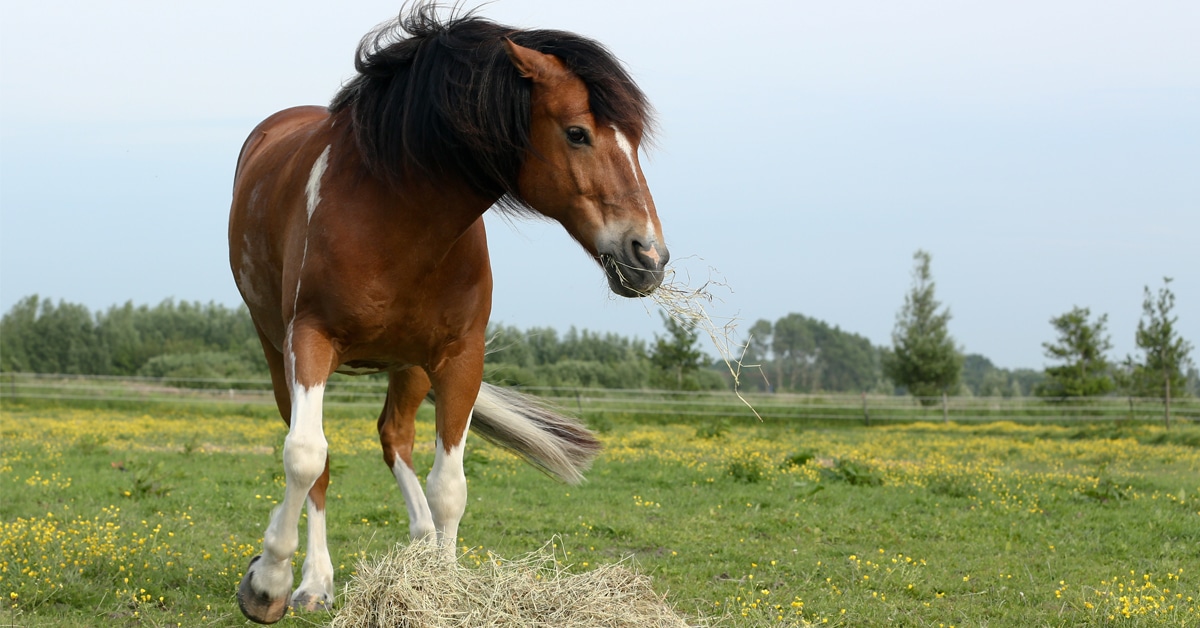Horses display physical signs of pain in a variety of ways which may or may not reflect the location of the injury or disease. Equally, it is an individual response in horses, which makes it harder to assess the degree of suffering. One thing we can be sure of is, the sooner we recognize a problem the better our chances are of resolving it quickly.
Veterinary medicine is in many ways like pediatrics. We deal with patients who cannot tell us where it hurts and who cannot understand why pain is occurring. This makes identifying and comforting that irritation a difficult task. But we know that the sooner we recognize a problem the better our chances of a quick resolution. It is our job with our horses, much like parents with children, to pick up on the subtle (and sometimes not so subtle) cues that our horses are hurting.
What is Pain?
“Pain is an unpleasant sensory and emotional experience (perception) associated with actual or potential tissue damage or is described in terms of such damage.” It can be grouped into a variety of categories. Nociceptive pain is related to a high and low intensity noxious stimulus (mechanical or thermal) such as a needle prick or laceration. This can be related to tissue damage and inflammation and is often divided into somatic pain and visceral pain. Somatic pain involves injury to the skin, muscles, bones and tendons and ligaments. Visceral pain refers to problems with the gastrointestinal tract and internal organs and is the type of pain felt during episodes of colic. Neuropathic pain occurs in response to high or low intensity stimuli of the central nervous system or peripheral nerves. Damage to the nerves and some neurologic diseases can cause this pain and while it is far less common, it is now thought to play a role in chronic pain associated with laminitis.
Pain is an individual response in horses, much like it is in people. What may be a 7 out of 10 on a pain scale to you may only feel like a 5 to me. Certain horses are more tolerant of it than others. Young, excitable horses may react more strongly to pain while in this author’s experience older horses tend to be more stoic, showing little sign of pain in extreme situations. This variability makes it very difficult to assess pain in our equine patients.
Recognizing Pain
One of the first signs of trouble is any change in normal behavior. As the owner, you know the ins and outs of their daily routine; how fast they eat, which water bucket they prefer to drink from and how they play in the field. A change in their attitude or actions can indicate a problem. In order to pick up on these alterations, pay close attention to your horse when he is normal, so that abnormalities stand out when they do occur.
Physical signs can be displayed in a variety of ways and may or may not reflect the location of the injury or disease. Non-specific visual cues include a “worried look,” flared nostrils, sweating or a far-off, glassy look to the eyes. Vital signs can also be affected with heart rate and respiratory rate increasing with painful conditions. Muscle fasiculations (twitches) may indicate a problem with the surrounding musculoskeletal system or could be a generalized sign of pain.
Horses with musculoskeletal pain may stand with an abnormal posture. A sore limb may be held in front of the other, bearing less weight. Horses may also be reluctant to move, especially in cases of laminitis when more than one foot is affected. Lameness can range from subtle changes in stride length or hoof placement to more significant changes such as a head nod or a hip hike. The level of lameness is graded on a scale of 1 to 5. Horses with severe musculoskeletal pain may also spend an increased amount of time lying down in order to take the weight off of their limbs.
Colic is the manifestation of abdominal pain and the vast majority of time involves the gastrointestinal tract (though other abdominal organs may be to blame). Signs of colic include; pawing, stretching out and kicking at their abdomen. Horses may flank-watch; look back at their belly as if to say “This is where it hurts!” They may also lay down and roll or make many frequent attempts to lay down, as if they cannot find a comfortable position. Some horses with abdominal pain have been known to display the Flehmen response by lifting their upper lip in the air.
Ocular pain can be recognized by the presence of squinting eyes, swollen lids and constricted pupils. Horses with oral pain may salivate excessively, drop feed or flinch when they chew. Neck or back pain may cause a horse to hold their head and neck in a stiff, lowered position. Respiratory distress and pleurodynia (discomfort in the chest) may be demonstrated by an outstretched head and neck and notable pain on palpation of their rib cage. Some mares with urogenital discomfort have been known to rub their hind end on fence posts and stall doors.
Treating Pain
Once you have recognized that your horse is in pain we can begin to address the problem. Treatments can include localized remedies and medications that affect the whole body. Localized treatments can involve non-medicinal therapies such as cold-hosing, icing or the application of pressure through bandaging. There are many stretching and massage therapies purported to reduce pain and increase healing in both human and veterinary medicine. These have been shown to have variable success in humans and the scientific literature describing these procedures in horses is sparse and inconclusive. Local medications include topical applications of anti-inflammatory drugs.
Local anesthetic agents, such as lidocaine or mepivicaine, act on the nerve endings after topical application or injection into an area. These drugs prevent the conduction of pain from the injured tissue to the brain. They do not lessen the inflammation or help treat the disease but merely block the transmission of pain. This is why, when we inject local anesthetics around the nerves of the limb to localize a lameness we call it “blocking.” While these medications are very effective at blocking, they are not long lasting and only useful in temporarily blocking pain for a procedure (such as suturing a laceration) or diagnostic test (like a lameness exam).
The most commonly used (and often abused) form of medication in horses are the non-steroidal anti-inflammatories (NSAIDs). This class of drugs includes phenylbuazone (Bute®), flunixin meglumine (Banamine®), firocoxib (Equioxx®), ketoprofen (Ketofen®), aspirin and carprofen (Rimadyl® for our dogs). They are anti-inflammatory because they stop the affects of inflammation by blocking the production of prostaglandins, one of the final products of the inflammatory pathway. Prostaglandins are produced by many tissues in the body as part of normal functions, like blood flow to the stomach and colon lining and the kidneys. They are “non-steroidal” because this group does not contain corticosteroids (like dexamethasone), which also stops inflammation but can affect the immune system.
It is the NSAIDs mechanism of action that eases pain but can also lead to serious side effects. Prostaglandins regulate blood flow to the kidneys and to the lining of the stomach and colon (specifically the Right Dorsal Colon). When NSAIDs are given, they block all prostaglandins, both normal and inflammatory, so there is decreased heat, swelling and pain but there is also decreased blood flow to kidneys and gut lining.
In a well-hydrated horse that is administered an appropriate dose for a short period of time, this usually won’t be a problem. However if a horse is dehydrated, getting excessive doses or even normal doses but for long periods of time, you will see the harmful side effects: gastric ulcers, colonic ulcers and renal failure.
Newer classes of NSAIDs (such as Equioxx) more specifically target the inflammatory cascade of prostaglandins while leaving the levels of “housekeeper” prostaglandins normal. These medications will be safer for long term use, protecting against damage to the kidneys and gut.
As we have discussed in previous issues, corticosteroids such as dexamethasone, triamcinolone and methylprednisolone are a very potent anti-inflammatory. Large doses or prolonged use will lead to suppression of the immune system and potential infection. So while corticosteroids have their place in controlling inflammation and discomfort, they should be used carefully and only at the direction of a veterinarian.
Another class of drugs that is used in the management of significant discomfort in horses are opioids such as morphine, butorphanol and fentanyl. Opioids can be administered intravenously, intramuscularly and transdermally. They have varying levels of efficacy and are more effective when used as a multimodal therapy in conjunction with other drugs including NSAIDs, alpha-2 agonists, and ketamine. Opioids are a highly regulated class of medications, requiring not only veterinary prescription but the exact amounts used are recorded and reported to the government regulatory bodies.
Other pain medications that are often used in veterinary medicine (though not always for their ability to control discomfort) include the alpha-2 agonists like xylazine (Rompun) and detomidine (Dormosedan) and ketamine which is mainly used as part of multidrug protocols for placing horses under general anesthesia for surgeries. These two classes of medications primarily cause sedation or anesthesia but also block irritation. Muscle relaxers such as methocarbamol (Robaxin) will also allow for pain relief if the discomfort is related to muscle spasms. A new class of drug that is being explored is the neuropathic pain modulators. These drugs, such as gabapentin which is currently being used to manage discomfort in cases of laminitis, work on the nerves themselves to control pain.
Monitoring Pain
Once you have your horse on an appropriate discomfort management protocol you must monitor them closely for a positive response. Recording the signs associated with pain prior to administering the medications and the changes seen after dosing is very important in determining if your plan is working. Repeated monitoring of heart rate, respiratory rate and behavioral changes such as appetite, recumbency and environmental interactions can help you adjust your pain medications to best suit your horse. Keeping a log can help you track progress.
With early recognition and appropriate diagnosis we can more effectively manage discomfort in horses. These steps can be applied to both acute and chronic pain and with appropriate monitoring we can adjust our medications to keep our horses pain free and healthy.
Local anesthetic agents act on the nerve endings and prevent the conduction of pain from the injured tissue to the brain. They do not lessen the inflammation or help treat the disease.
The Latest










